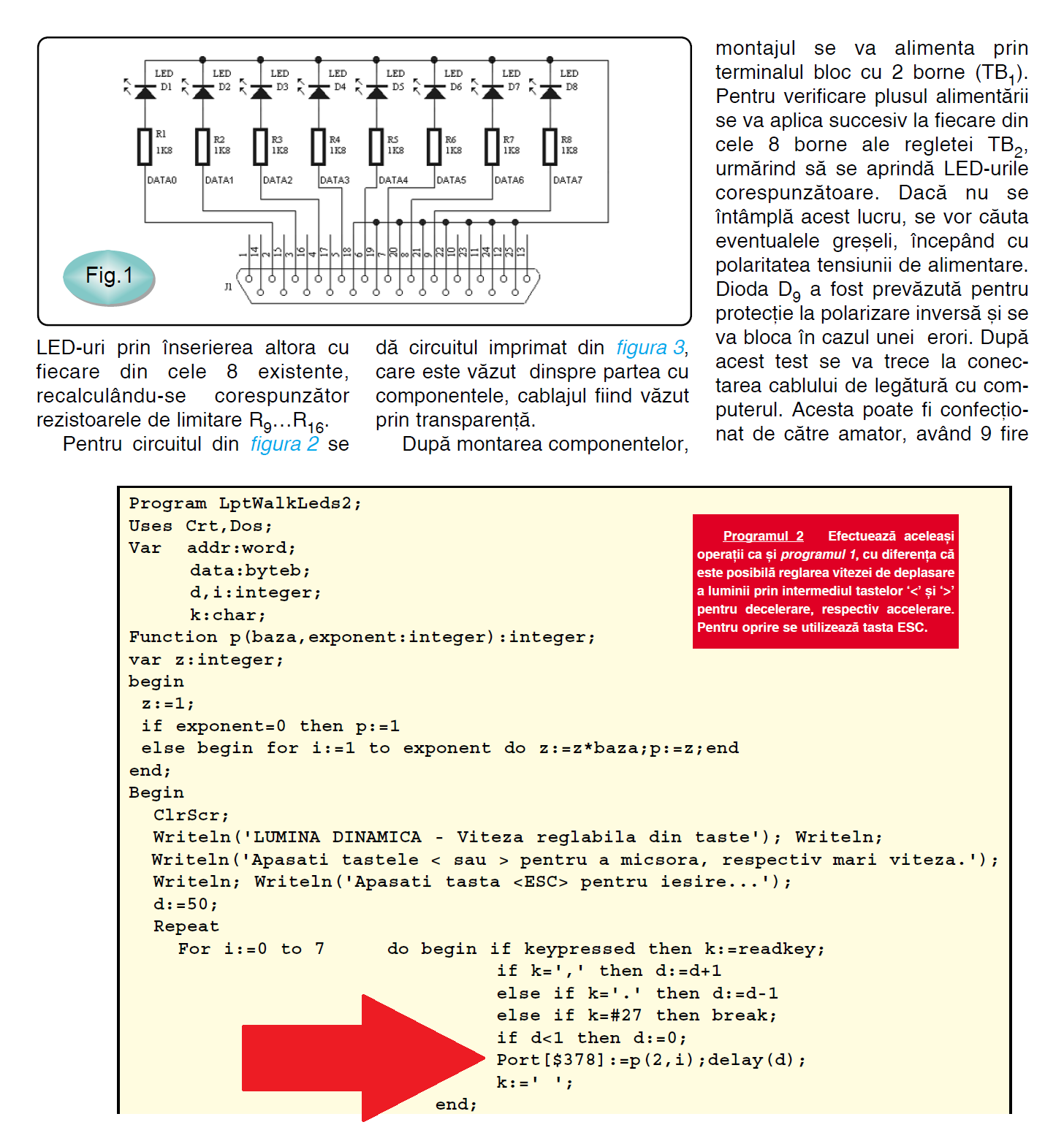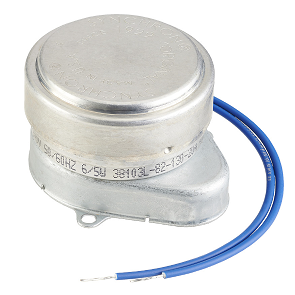The beginnings of an era
It was the winter of 2003, pretty much this time of year, 20 years ago. I was in my last year of technical high school. I was learning lots of electronic tips and tricks and I was also experimenting with programming in Borland Pascal 7.1. I was having a new 900MHz computer with a 6.4GB HDD and about 256MB of RAM.
I stumbled upon a magazine
I was fascinated about the idea of having some electronic device driven by the computer as this was something you could only see in the SF movies back then. One day I cam across a technical Romanian electronics magazine which was having an article on how to drive some LEDs using the parallel port of the PC in order to make a vu meter for Windows 98.

(Credit: Conex Club magazine, year 2000, no 6. Romania)
It gave the schematic and it gave me the Borland code. In it was a line which taught me how to send information to the parallel port of the PC. I remember that, once I discovered this thing I was so excited, I couldn't sleep that night. I kept thinking that this was just the beginning of endless possibilities for me. I had the knowledge on how to build analog amplifiers, on how to use relays, on how to switch on grid lines by using logical signals and many more. Having them all submitted now to this new idea of owning up to 8 bits and 255 channels to drive all of them from the computer was just amazing. I was thinking that I could even build a robot. I was saying to myself: "wow, Marius, you could even build yourself a computer driven house system. Operate the blinds, turn on the light..." And that was long before the modern day notion of smart houses.
The next day I frankensteined together a small pcb with LEDs. Then I connected optocouplers to those LED lines and then I used the optocouplers to drive relays. I was at the peak of my happiness. I was telling my parents that I was building a robot arm to connect to my computer, but they didn't believe me. I remember now, judging the teenager memories through the mind of an adult, that they had nodded their heads, but they thought that I was exaggerating or day dreaming. Back then I wasn't even having access to materials. The only bits of hardware I was having were scrapped components from cassette tape players and telephone relays. I even had to build my own optocouplers by trimming off the heads of some metal BC107 transistors.

The fingertips were made of cassette tape pressure rollers, the plastic gears belonged to some old toys, the finger actuator motor came from a Walkman (if people still remember those) and the hand was made of refurbished Fr4 from old PCBs. The trickiest part of all was the forearm’s actuator which needed to be strong enough to lift the entire assembly. I had found an old actuator from a dismantled boiler.

It was a Honeywell 3-way valve motor. Those familiar with the model might remember that it was having an attached gearbox with a high gear ratio. It was only having a small problem: the motor was burned. I had to stick a rubber pad on the rotor’s case and to use an external motor with a shaft to drive it, but that worked... eventually.
Where dreams might take me
A few days later I went to my Digital Electronics teacher and told him that I wanted to participate to the National Scientific Communications contest. For those of you who are familiar with the Romanian context, and stumble upon this article, that was also known as the Stefan Procopiu contest.
The Pascal code was pretty simple. It would trigger the relays one by one and it would loop the movements of the arm in a repetitive cycle. The robotic arm would reach down, close its moving thumb, move up, move to the left, move to the right, move down again and release its grab. That day I brought my project to school for the first time and showed it to my teacher, everything worked perfectly. It was something new, even for my teacher who had never seen anything similar from any other student before. I wish I could show you some more pictures, but at that time the digital cameras were inexistent in my area and the celluloid cameras were rare. Most of the pictures I posted in this article were taken later, after years of keeping this project shelved in a box.
”Oops” during the day of the contest
Like any other good story, it has to be an intricate chapter when something goes really bad and you don't know if things are going to turn for the better. I had taken the written paper with me, I took spare cables, tools, multimeter, the desktop computer and I even created a safety copy of the Pascal code on a 1.44M floppy disk. The contest was held in a different school building, in a different location. The hall was badly illuminated with natural light and they had installed lots of 32'' fluorescent lights to compensate this. Before I realized what was going on, nothing was really working. The code seemed to run Ok, the power was good, no transistor was damaged, but the relays didn't click at all. The strangest thing happened and Murphy's laws struck again. And by the way, calling them Murphy laws it's highly inappropriate. This man never stated any "law". They cannot be called laws. They are curses. Or spells.
At a closer look, the relays appeared as they were all engaged. Continuously, at once and regardless of the states of the LPT bits. I remember that I spent a lot of time and effort trying to diagnose everything with my 18yr old mind that day, but I still couldn't figure it out. It had taken me almost one full hour, my time was up and I had to go and hold my presentation in front of the jury. In the last moment I managed to obtain 10 more minutes as I was able to negotiate having someone else go and present before me. I was literally exasperated and after I re-copied the code from the 1.44M disk, I simply threw it on the desk in frustration. Suddenly, the robot arm started moving for the first time, properly, that evening, and I swear I'm not making this up.
When I was picking up the disk, it would stop working again and when I was putting it back on the wires, it would start working. I started moving the disk around the desk, covering one by one all of the areas of the harness in order to troubleshoot this and figure it out. The robot arm only worked when I was placing the disk over the PCB. "The optocouplers!"- I said to myself almost screaming inside of me while exhaling in frustration. The fluorescent light was entering through the transparent cases of the LEDs and it would saturate the phototransistors at all times.
What followed was a good way of presenting a perfect "lesson learned" example to the jury as I was sustaining my project paper. It also made a good story to look back at 20yrs later and laugh about. I had won the 1st prize that year and was included into the team of High school National Olympics. I had been awarded, interviewed and later on that year, invited to the national television for a talk show about it.
 Marius Taciuc
Marius Taciuc